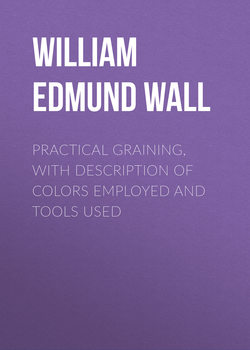Читать книгу Practical Graining, with Description of Colors Employed and Tools Used - William Edmund Wall - Страница 5
CHAPTER IV.
GRAINING OAK
ОглавлениеOak may be overgrained by using a very thin coating of asphaltum for the shading color; thin with oil and spirits.
Oak may be grained in distemper—that is, using beer or alcohol for a vehicle with the color, instead of oil. Good work can be done in this way, but not so quickly as in oil. A little sugar added to the beer makes it dry slower and work better than without it. If a tablespoonful of alcohol be added to a pint of beer, the work can be combed while wet almost as well as if in oil. First dampen the ground with a sponge wrung out in clean water, and then rub on the color the same as in oil; comb while wet (or use an overgrainer when dry) and blend lightly with a badger blender; then wipe out the veins or champs with a wet rag before the color dries, or afterward, as desired. A similar effect for light veins is obtained by using the fitch tool to put on the veins or champs and lifting off the color with the blender, thus leaving the champs light. For dark veins the work is put on with a fitch and left as put on. The heart-work may be done in the same manner, both for light and for dark pieces, but it cannot be done so successfully as if done in oil.
Of all the woods we have to imitate, I think oak is the most difficult, hence I have tried to explain the different ways in ordinary use of imitating it; and in closing I would say, Do not overdo your work. Most grainers put in more work—that is, showy grains—than would appear in the natural wood unless it were all selected. And remember that a nice piece of combed work is just as good a representation of oak as the majority of the heart-work often seen.
